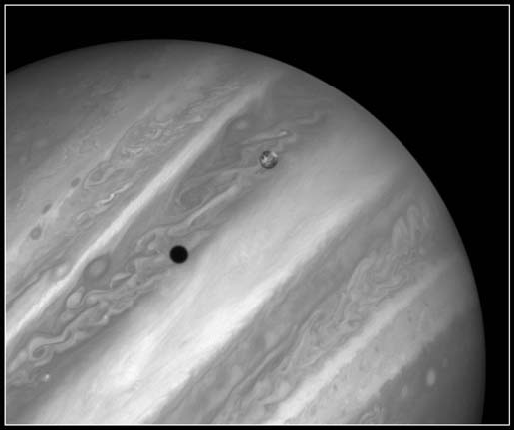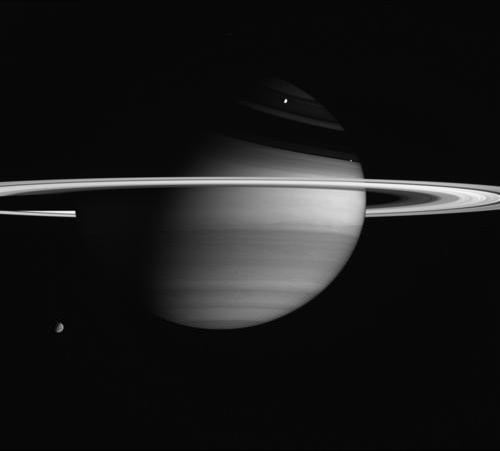An exciting year of planetary action will unfold with at least two bright planets dominating the evening sky into September; the year will close quietly with no bright planets until Venus reappears by Christmas. Countless asteroids, meteor showers, and unexpected aurorae, along with a bright comet and a rare transit of Mercury will make this year a real viewing pleasure.
There are no lunar or solar eclipses during 2006. The next lunar eclipse will be a total one after sunset on March 3, 2007 and the next solar eclipse is a very slight partial, about 5%, on May 20, 2012.
Comet Schwassmann-Wachmann 3 will come within 87 million miles of the Sun on June 7 and will potentially brighten to magnitude +1 during its closest approach to Earth on May 13. The comet should be visible to the unaided eye from April through most of July. It will pass close to Vega in early May and be high in the north at midnight before passing through Cygnus and Pegasus, but it will grow harder to see with the approaching dawn as summer progresses.
Asteroids: Become a dedicated asteroid hunter this year! All that is needed is a star chart with positions of the asteroids plotted and a couple of clear, moonless nights to confirm their movement. Vesta is the easiest to locate as it reaches opposition on January 5 in Gemini at magnitude +6.2. Pallas is at opposition on July 1 in Hercules, Eunomia in Capricornus on July 29, Hebe in Aquarius on August 4, Ceres in Piscis Austrinus on August 12, and Iris in Aries on November 14. These asteroids range in brightness from magnitude +6.8 to +9.5.
Venus dominates the evening sky very briefly as 2006 begins, but Saturn, along with Mars, will take over and be joined by brilliant Jupiter soon after. Mercury will join them briefly from mid-February through early March. Mars will slowly fade followed by Saturn, but Saturn will vanish first into the July twilight. Mercury reappears briefly in the evening during June, with Jupiter ruling into September. As autumn arrives, Jupiter departs with Mars leaving the evening sky barren of bright planets. Fortunately Uranus and Neptune will be visible well towards midnight later in the year. Venus reappears very low after sunset by Christmas while Saturn reappears before midnight in the northeast. Here is the breakdown for each planet in the evening sky during 2006:
Mercury: This elusive planet will be easiest to see in the evening sky from February 9 to March 5 with its highest point above the horizon on February 23. On February 28 the crescent Moon will be to the left of Mercury making it easier to find. Another good evening apparition occurs from June 6 to 30 with Mercury being highest on June 20. Mercury grows steadily larger from 6 to 10 arc seconds across as it approaches Earth and its magnitude will hover around 0. It will go through phases like a tiny, coppery version of the Moon from nearly full to a thin crescent. Mercury will make a rare transit of the Sun on November 8 that will be visible from 2:12 p.m. until sunset. Use a safe solar filter to view the tiny, inky black dot of Mercury against the Sun.
Venus: This is an off year for Venus in the evening sky as it will dominate the morning sky from January through October. It may be seen briefly in the evening sky during the first week of January and become visible again by December. The magnitude will range from -3.8 to -4.5. It will be a huge crescent in early January being over one arc minute across and shrink to barely 10 arc seconds by September.
Mars: This is an off year for Mars as it is small and distant before becoming lost in the twilight by September. The best views will be in January when it is around 12 arc seconds across and shining at magnitude -0.5 before shrinking to barely 4 arc seconds across and fading to Magnitude +1.8 later in the year. Mars will be back for a modest opposition during December 2007.
Jupiter: This most detailed of planets has finally become a warm-season planet as it reaches opposition on May 4 in Libra. It will be 44.6 arc seconds across and shine at magnitude -2.5. Great viewing will last long into summer before it is lost in the twilight by October. By then it will have shrunk to 31 arc seconds and fade to magnitude -1.7.

Saturn: This most beautiful of planets has another excellent opposition on January 27 in Cancer when it is 20.5 arc seconds across and shines golden at magnitude -0.2. The rings are beginning to close, but Saturn will still have the classic appearance with the added beauty of being near the Beehive Cluster. Saturn will slowly fade to magnitude +0.5 and shrink to 17 arc seconds by July when it will become lost in the evening twilight. Saturn will rise in the northeast before midnight by December for the start of yet another great viewing season in 2007.

Uranus: This turquoise world reaches opposition on September 5 in Aquarius. It will be 3.7 arc seconds across and shine at magnitude +5.7 not far to the left of the bright star Lambda Aquarii.
Neptune: This baby blue world reaches opposition on August 11 in Capricornus. It will be 2.4 arc seconds across and shine at magnitude +7.8 above the bright star Iota Capricorni. A finder chart for Uranus and Neptune will appear in the July issue of Telescopic Topics. Both planets will rise before midnight in July and gradually fade into the evening twilight during January 2007.
Pluto: This faint world will be very difficult to find this year as it hides among the countless stars of the Milky Way. It is at opposition on June 16 in Serpens Cauda and will be a faint speck at 0.1 arc seconds across and magnitude +13.8. It will get even worse for locating Pluto as it crosses the star-studded M24, the Small Sagittarius Star Cloud, in 2009. It will emerge from the other side of the Milky Way in 2015 when it will be in the Teaspoon asterism in Sagittarius.
